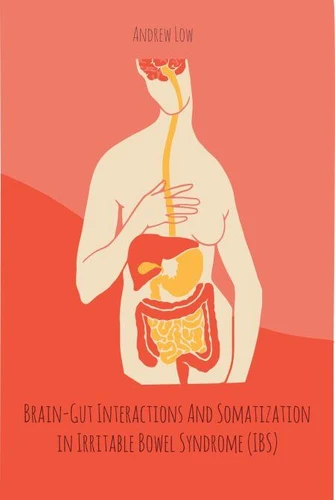Brain - Gut Interactions And Somatization in Irritable Bowel Syndrome (IBS)
Par :Formats :
Disponible dans votre compte client Decitre ou Furet du Nord dès validation de votre commande. Le format ePub est :
- Compatible avec une lecture sur My Vivlio (smartphone, tablette, ordinateur)
- Compatible avec une lecture sur liseuses Vivlio
- Pour les liseuses autres que Vivlio, vous devez utiliser le logiciel Adobe Digital Edition. Non compatible avec la lecture sur les liseuses Kindle, Remarkable et Sony
 , qui est-ce ?
, qui est-ce ?Notre partenaire de plateforme de lecture numérique où vous retrouverez l'ensemble de vos ebooks gratuitement
Pour en savoir plus sur nos ebooks, consultez notre aide en ligne ici
- FormatePub
- ISBN8201563967
- EAN9798201563967
- Date de parution28/08/2021
- Protection num.pas de protection
- Infos supplémentairesepub
- ÉditeurJL
Résumé
Irritable bowel syndrome (IBS) is a common disorder of gut-brain interaction defined by recurrent and longstanding abdominal pain and disturbed bowel habits. This book aims to deepen the knowledge about aberrant visceral sensory processing seen in a large group of patients with IBS, focusing on central mechanisms. Anxiety, depression, and somatization are all associated with increased pain intensity ratings in hypersensitive IBS patients.
Non-painful intensity ratings are influenced only by fear and to the same extent in regular- and hypersensitive IBS patients. Somatization is further associated with several measurements of rectal pain sensitivity and mediated the effects of depression and GI-specific anxiety on rectal pain perception. Sex, age, and sexual abuse in adulthood are also associated with rectal pain sensitivity. The level of somatization in IBS is related to differences in local gray matter network connectivity, mainly in regions of the prefrontal cortex, insula, and cerebellum.
In conclusion, somatization, measured as multiple somatic symptoms, is essential for visceral (hyper-) sensitivity in IBS and is associated with altered structural connectivity within the brain.
Non-painful intensity ratings are influenced only by fear and to the same extent in regular- and hypersensitive IBS patients. Somatization is further associated with several measurements of rectal pain sensitivity and mediated the effects of depression and GI-specific anxiety on rectal pain perception. Sex, age, and sexual abuse in adulthood are also associated with rectal pain sensitivity. The level of somatization in IBS is related to differences in local gray matter network connectivity, mainly in regions of the prefrontal cortex, insula, and cerebellum.
In conclusion, somatization, measured as multiple somatic symptoms, is essential for visceral (hyper-) sensitivity in IBS and is associated with altered structural connectivity within the brain.
Irritable bowel syndrome (IBS) is a common disorder of gut-brain interaction defined by recurrent and longstanding abdominal pain and disturbed bowel habits. This book aims to deepen the knowledge about aberrant visceral sensory processing seen in a large group of patients with IBS, focusing on central mechanisms. Anxiety, depression, and somatization are all associated with increased pain intensity ratings in hypersensitive IBS patients.
Non-painful intensity ratings are influenced only by fear and to the same extent in regular- and hypersensitive IBS patients. Somatization is further associated with several measurements of rectal pain sensitivity and mediated the effects of depression and GI-specific anxiety on rectal pain perception. Sex, age, and sexual abuse in adulthood are also associated with rectal pain sensitivity. The level of somatization in IBS is related to differences in local gray matter network connectivity, mainly in regions of the prefrontal cortex, insula, and cerebellum.
In conclusion, somatization, measured as multiple somatic symptoms, is essential for visceral (hyper-) sensitivity in IBS and is associated with altered structural connectivity within the brain.
Non-painful intensity ratings are influenced only by fear and to the same extent in regular- and hypersensitive IBS patients. Somatization is further associated with several measurements of rectal pain sensitivity and mediated the effects of depression and GI-specific anxiety on rectal pain perception. Sex, age, and sexual abuse in adulthood are also associated with rectal pain sensitivity. The level of somatization in IBS is related to differences in local gray matter network connectivity, mainly in regions of the prefrontal cortex, insula, and cerebellum.
In conclusion, somatization, measured as multiple somatic symptoms, is essential for visceral (hyper-) sensitivity in IBS and is associated with altered structural connectivity within the brain.








